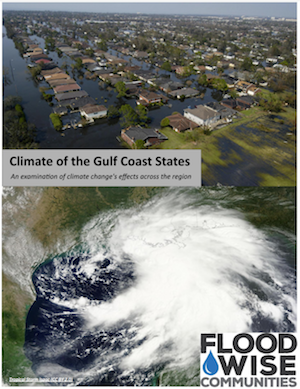In collaboration with the Great Lakes Integrated Sciences and Assessments, Stanford University, Headwaters Economics, and Adaptation International, SCIPP has produced a report summarizing the changing climate and common weather and climate hazards of the Gulf Coast states (TX, LA, MS, AL, GA, FL). This report was produced for the FloodWise Communities Project, funded by the National Academies of Sciences’ Gulf Research Program, and is part of a broader package of resources produced in concert with Gulf Coast communities threatened by a growing flood risk in the face of climate change. The primary target audience is city planners, community leaders, and local/state governments seeking deeper knowledge of the region’s climate and broader context for observed local climate trends.
Chapter 1 summarizes the physical geography of the Gulf Coast states, the climatic sub-regions based on the Köppen-Geiger climate classifications, and the entire region’s average climate state based on the 1981-2010 climate normal. Chapter 2 includes city, state, and regional-level analyses of observed changes in temperature and rainfall over the last 40 years, as well as high-level explanations of why these changes have occurred. In Chapter 3, the report explains the concept of climate modeling for non-experts, makes a comparison of statistically versus dynamically downscaled climate model products, and describes how the Gulf Coast states’ climate could change by 2100 according to the NA-CORDEX multi-model ensemble (under the RCP8.5 emissions scenario). The fourth and final chapter of the report consists of three-page summaries of weather and climate hazards to which parts of the Gulf Coast states are vulnerable; namely, sea level rise, hurricanes, droughts and floods, tornadoes, and wildfires.
The full report is available here.

